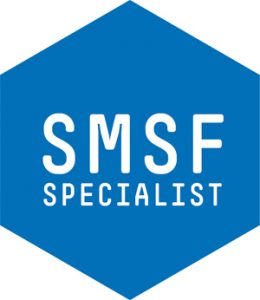Two recent AAT decisions shed important light on what constitutes business real property: Allzams Trust and Commissioner of Taxation [2021] AATA 2767 and Allen and Commissioner of Taxation [2021] AATA 2768.

Both cases involved a disappointed taxpayer seeking a review by the Administrative Appeals Tribunal of a decision of the Commissioner of Taxation.
These decisions indicate the high degree of difficulty a taxpayer might face if arguing that residential real estate constitutes business real property on the basis that the taxpayer is in the business of renting real estate.
Dennis Allen had degrees in accounting and applied finance. He had been involved in the real estate investment market since the 1980s. He appears to have invested in real estate in two ways. Firstly, he invested in his name personally and secondly he invested via a trust (Allzams Trust) of which he was the trustee.
The portfolio he had built up was sizeable, being summarised as follows:
Personal assets
|
Address |
Purchase Date |
Purchase Price |
Ownership Interest |
First Available for Rent |
Current Market Value |
Level of Borrowings |
|
3 Mereweather Avenue Frankston |
November 2016 |
$400,000 |
100% |
November 2016 |
$500,000 |
$400,000 |
|
5 Mereweather Avenue Frankston |
November 2016 |
$400,000 |
100% |
November 2016 |
$500,000 |
$400,000 |
|
(comprising seven units) Units 1-7/13 Schofield Street Essendon 3040 |
September 2014 |
$1,735,000 |
100% |
September 2015 |
$5,000,000 |
$1,450,000 |
Trust assets
|
Address |
Purchase Date |
Purchase Price |
Ownership Interest |
First Available for Rent |
Current Market Value |
Level of Borrowings |
|
(comprising five units) 1-5/7 Mereweather Avenue Frankston 3199 |
December 2016 |
$1,150,000 |
100% |
January 2017 |
$2,000,000 |
$800,000 |
Mr Allen had been a professional banker. However, he was made redundant in 2018 and from then on focused on his property portfolio.
Between his activities as trustee for the trust real estate and his activities for his personal real estate, Mr Allen spent at least 25 hours per week on real estate-related activities. These activities varied from week to week. However, activities from one particular week included:
- day-to-day management of qualified professionals needed to facilitate a development
- crushing rock and applying rock and topsoil to seven gardens
- filling the core of the front wall and garden walls
- building retaining fences around the real estate
- planting 250 trees and plants in the seven gardens
- final cleaning of flooring across four new apartments
- organising the installing of curtains across four new apartments
- organising paving contractors
- preparing documentation for mediation session with Dispute Australia on a fencing dispute
- organising strip lighting for four kitchens and eight bathrooms
- painting eaves and fascia boards
- fixing eaves on unit one
- organising treads for stairs in the properties
For his personal real estate, Mr Allen used the services of a real estate agent to let the real estate for rent. The duties required of the agent were the following:
- advertise the real estate on realestate.com.au
- open the real estate for inspections for prospective tenants
- provide Mr Allen with a list of prospective tenants
Once the real estate agent had performed the above duties, Mr Allen conducted the management of the properties himself. Although one would expect the same to apply in respect of the trust properties as well, the Tribunal noted that in that ‘… matter there is no mention of any roll of estate agents…’.
Are they business real property?
It appears that what Mr Allen really wanted to know was whether the real estate constituted business real property and therefore could be transferred to his self managed superannuation fund.
Naturally, in order to constitute business real property, real estate must be used wholly and exclusively in or more businesses. Leasing residential property will usually not constitute a business. However, in certain circumstances it can. The Commissioner himself acknowledged this in Self Managed Superannuation Fund Ruling SMSFR 2009/1, see in particular example 14, which involves ‘Mr Wood’ who ‘owns 20 residential units’.
Mr Allen had indeed originally asked the Commissioner whether a proposed transfer of properties owned by him personally and as trustee of the trust, to a self managed superannuation fund would be a permissible transfer of ‘business real property’ within section 66(2)(b) of the Superannuation Industry (Supervision) Act 1993 (Cth). The original application was in 2018 or possibly even earlier.
There was subsequent correspondence between Mr Allen’s professional advisers and the Superannuation Advice Branch of the Australian Taxation Office where they advised they could not provide a binding private ruling ‘to matters covered by superannuation law’. The advice was that the ATO could provide an ‘administrative binding ruling’ on ‘SMSF-specific advice’.
After submitting such a request, Mr Allen’s advisers were contacted by the ATO and advised that in addition to the request for SMSF-specific advice, separate income tax ruling requests should be made by him personally and also on behalf of the trust of which he was the sole trustee, which simply pose the question ‘Am I in business?’
Mr Allen was clearly a very ‘hands on’ landlord. Further, it is clear from reviewing the facts that:
- a significant amount of capital was used ($8 million in total)
- the gearing level was relatively modest ($3.05 million)
- there is every chance that the properties generate net rent. Indeed, in the decision for Mr Allen personally, the Tribunal observed that ‘[t]here is nothing in the stated facts to suggest that the net rent was a negative figure.’
Yet, despite all of this, the facts were far from easily satisfying the business real property test.
The Tribunal did find that Mr Allen personally was carrying on a business of renting the properties he owned personally in two years. Presumably this augured well for his personal real estate constituting business real property.
However, in respect of trust real estate, the Tribunal remitted the matter to the Commissioner to:
- request that Mr Allen (as trustee of the trust) make an application for another private ruling; and
- the objection is taken not to have been made.
Conclusions
It can be possible at times for residential property to constitute business real estate on the basis that the real estate is being used in a business of leasing out residential property. (If so, the real estate can then be acquired by an SMSF from a related party, assuming additional criteria are also satisfied.)
However, do not expect this to be easily satisfied. Mr Allen’s facts indicate a fairly sophisticated, capital-heavy, net-income producing operation. However, he received a negative response from the ATO and then only received a partially positive response at the Tribunal. Furthermore the process of ATO input and Tribunal review appears to have taken at least three years (possibly even longer).
For those contemplating whether renting residential real estate constitutes business real property, experienced legal advice and input can be very prudent. Moreover, if this can be satisfied additional tax might be payable on future disposal of such property.
By Bryce Figot, Special Counsel, and Daniel Butler, Director
DBA Lawyers
17th August 2021
smsadviser.com























